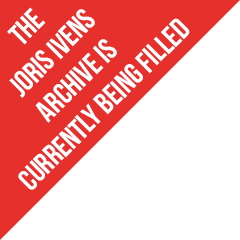

The 16th Bueu International Film Festival pays tribute to Joris Ivens with both a retrospective of his short films and a splendid monograph on Ivens, written by Severiano Casalderrey. This book will be presented on Sunday 17th of Sepyember, it is the very first monograph on Ivens in the Galician language: La Expansion del documental a través de los cortometrajes de Joris Ivens (1898-1989).
On 17 August the MuSeaum in Sydney - aka the Australian National Maritime Museum - will organize a ceremony to commemorate Independence day of the Republic of Indonesia. Next to the presentations Ivens' short documentary film Indonesia Calling will be screened. In June prime-minister Mark Rutte of The Netherlands finally - after almost eight decades (!) - 'fully and without any reservation' acknowledged 17 August 1945 as the independence day of Indonesia.
Read more: Indonesia Calling at Independence Day Ceremony MuSeaum Sydney
Huis Marseille, Museum for Photography in Amsterdam, presents until 22 October 2023 a special collection of avant-garde and surrealistic photographs, deriving from the Belgian art magazine Variétés dating from the 1920's. Next to 43 photos made by Germaine Krull also two films of Joris Ivens are shown permanently: Etudes des mouvements (1927, Paris, A Study in movement) and The Bridge (1928, Rotterdam). The film images of Ivens and the photos of Krull are very closely connected: these not only show the same subject matter: metal, the lift bridge, city landscapes, but als share the same new artistic vision: shot spontaniously, without any rules, without a tripod and with a hand held camera.
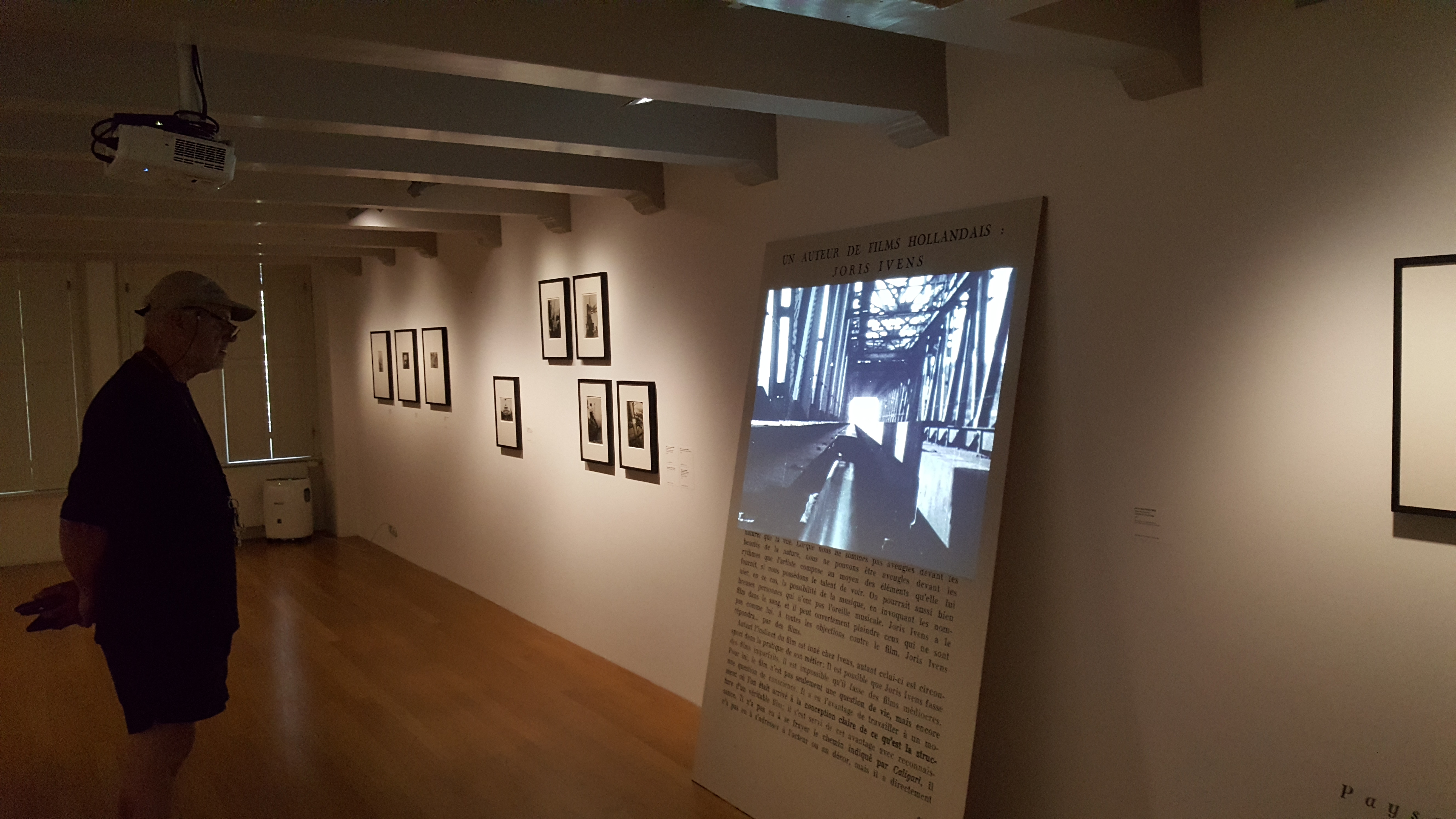
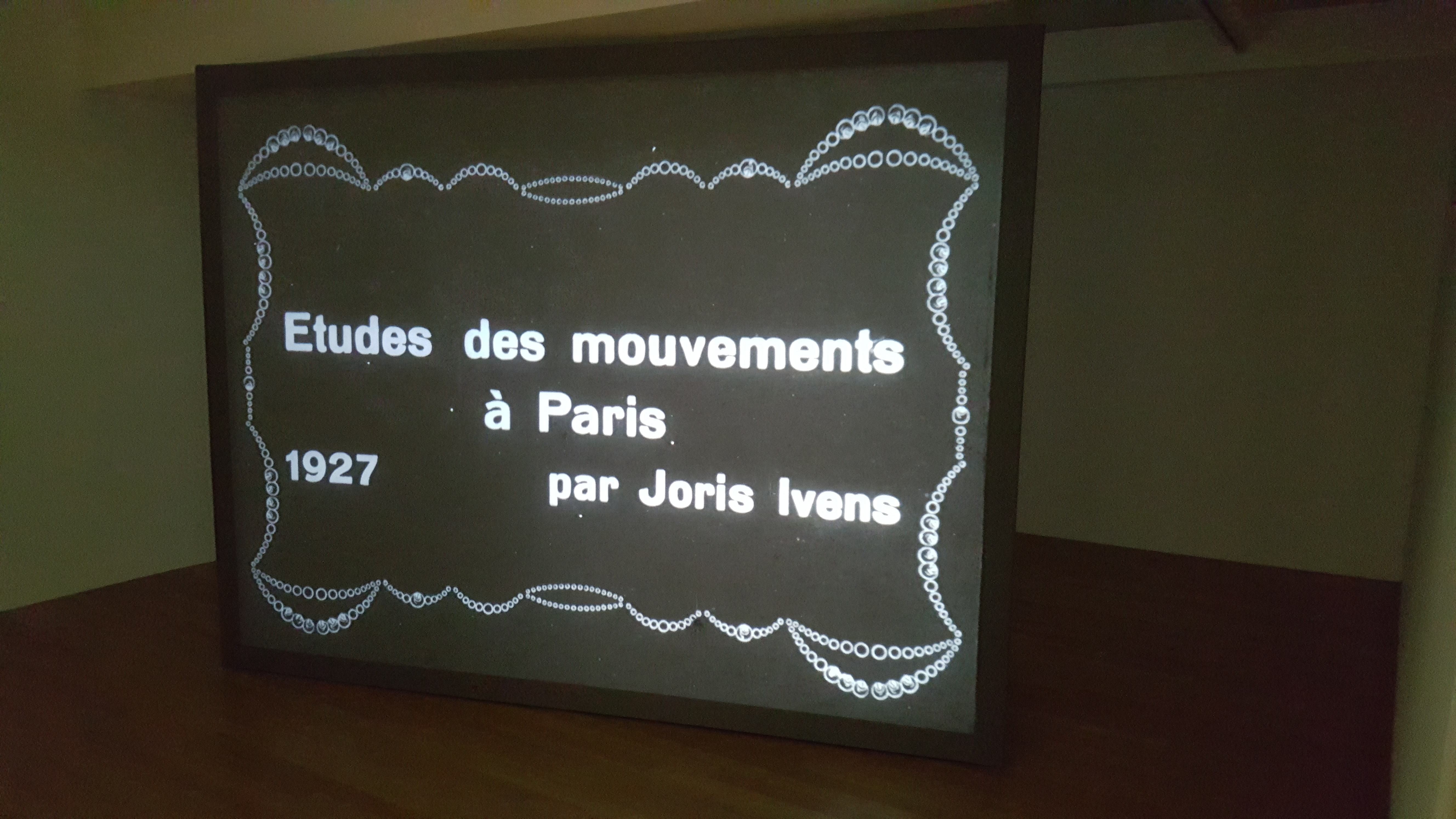
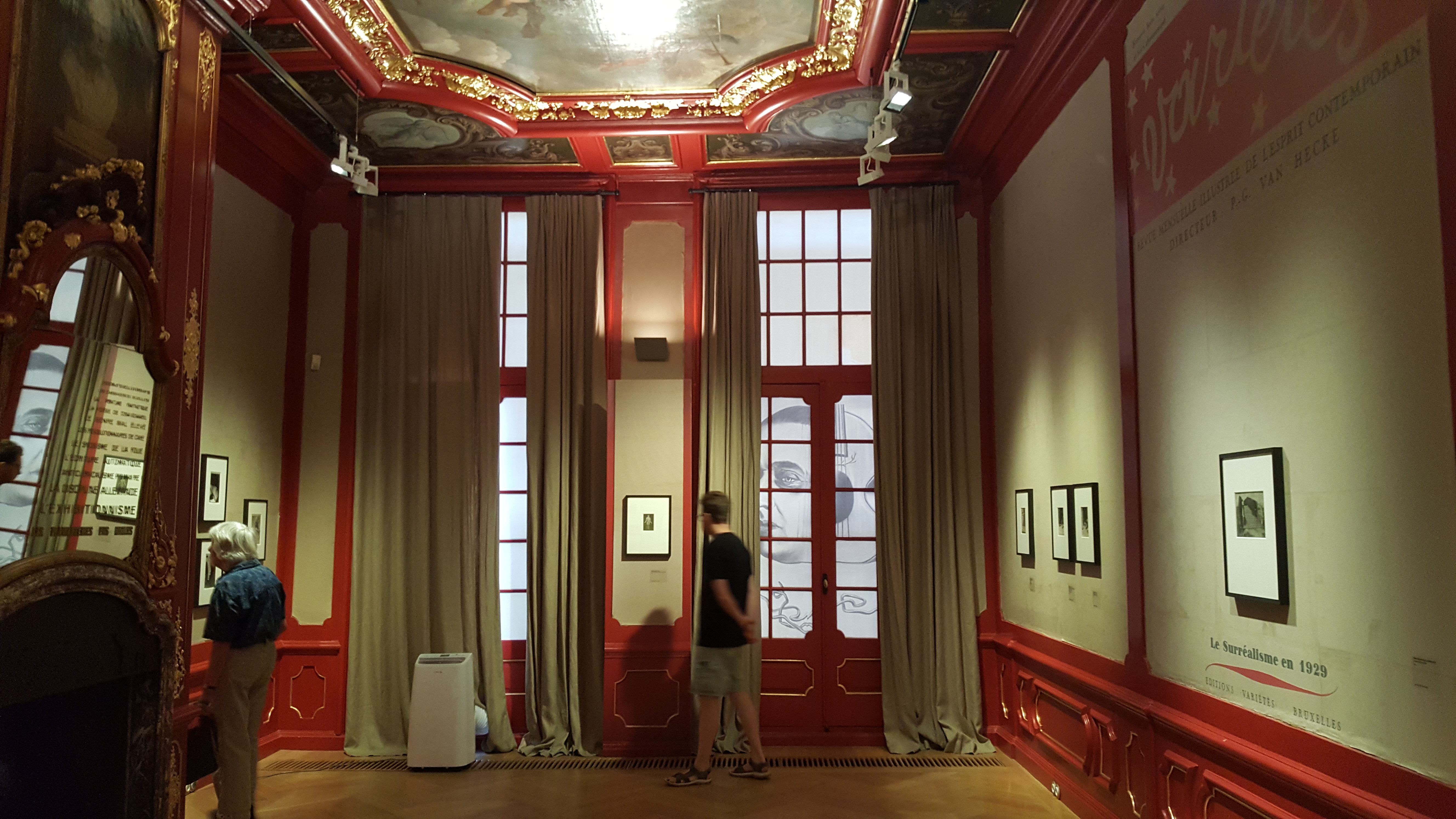
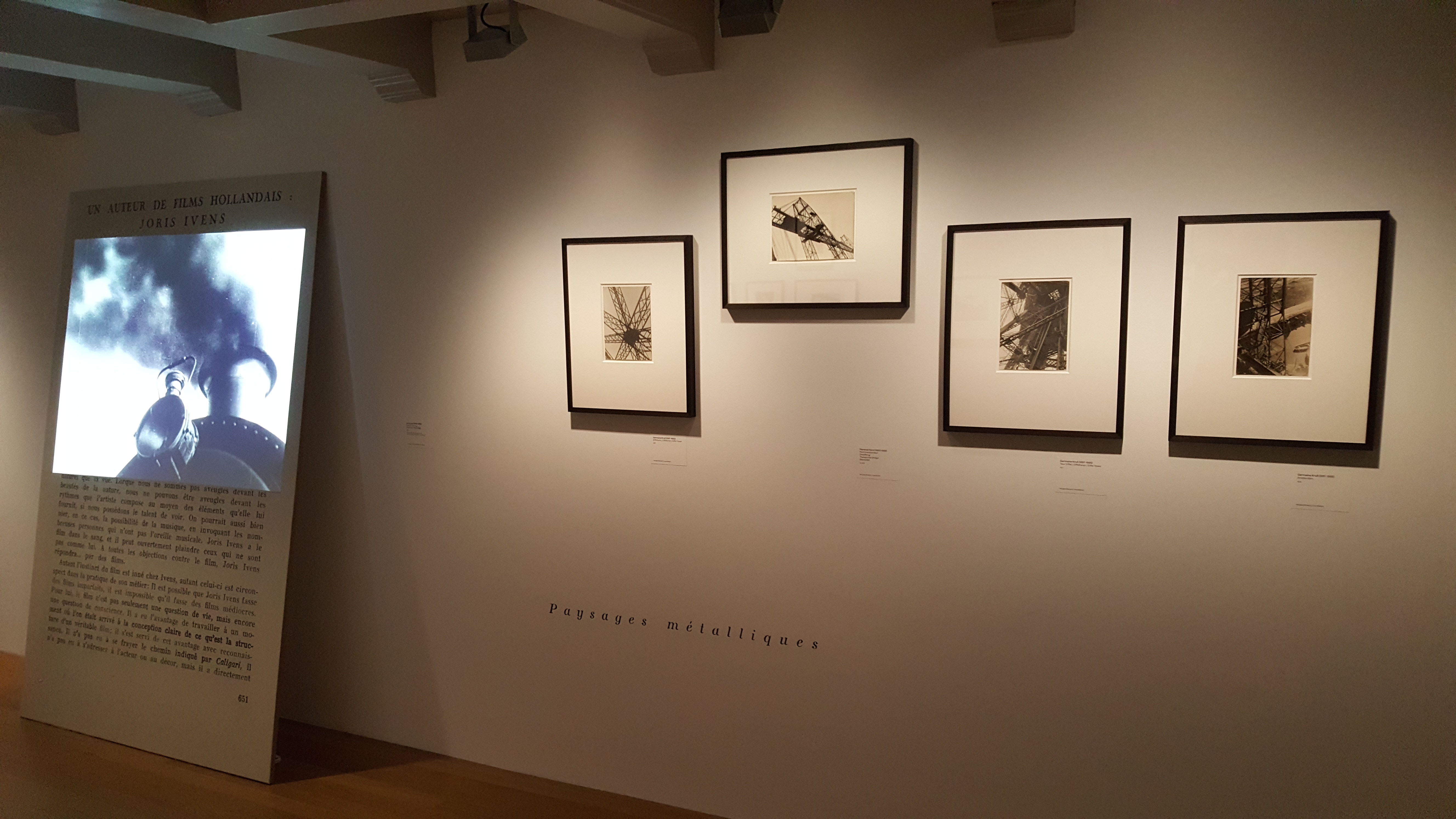
Zalen met de expositie Varietés, Huis Marseille. Met o.a. de films De brug en Etudes des mouvements van Joris Ivens ne de foto's van Germaine Krull over de hefbrug in Rotterdam.
Previoulsy this combination was presented at th eexhibition ‘Passages, Joris Ivens and the arts of this century’ in 1999 in Museum Het Valkhof. For these avant-garde photos, with next these also photo’s made by Man Ray, L. Meesens, László Moholy-Nagy, Eli Lotar and others, was drawn from the at that time still unknown collection of AMSAB in Gand, Belgium (Archives and Museum of the Socialist Workersmovement). The vintage prints of these pioneers of modern photography were redicovered thirty years ago amongst more than 150,000 press photos owned by the Flemish daily newspaper Vooruit, miraculously surviving the intervening years. The collection owes its existence to the Belgian art magazine Variétés, which ran for only two years. Variétés was an important international platform for a generation of young photographers and their new and adventurous imagery. The magazine published many startlingly original photographs, photograms and photomontages by trailblazing photographers such as Man Ray, Germaine Krull, Berenice Abbott, László Moholy-Nagy, Florence Henri and Eli Lotar. The monthly magazine also devoted close attention to avant-garde film. With vintage photographs, magazine spreads and film fragments Huis Marseille will be hosting an extraordinary panorama of avant-garde photography and film from the interwar years. The exhibition has been organised in close collaboration with the Amsab-Instituut voor Sociale Geschiedenis in Gent, which manages the Variétés collection.
Variétés – Revue mensuelle illustrée de l’esprit contemporain (Illustrated monthly revue of the modern spirit), as the magazine was called in full, appeared from May 1928 until April 1930 and did indeed reflect the spirit of a new age. The magazine was the brainchild of the cultural all-rounder and art promoter Paul-Gustave van Hecke (1887-1967), who introduced Belgium to abstract art, Dada, and Surrealism. The versatile E.L.T. Mesens (1903-1971) fulfilled an equally important role: a pianist and composer, critic, artist, photographer and exhibition curator, he had an enormous network of contacts. The two were close friends and ran the L’Époque gallery together in Brussels. Van Hecke provided the funding for L’Époque and Variétés and Mesens looked after its international network. The magazine had an unmistakeably surrealist signature; in 1929 it even devoted a special edition entirely to Surrealism. The team that put the magazine together every month included a screenwriter and a film critic. Dutch authors made regular contributions, and themed editions included one on Hollande.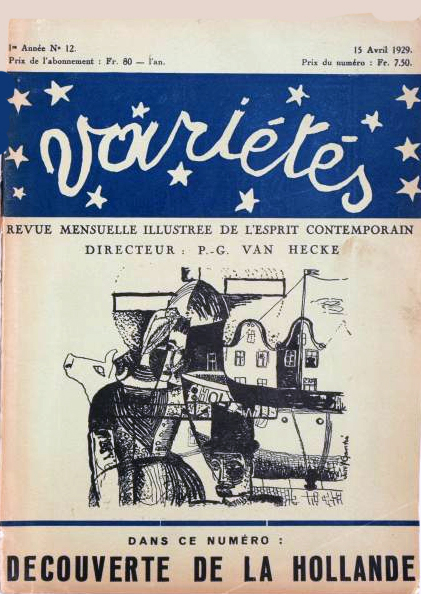
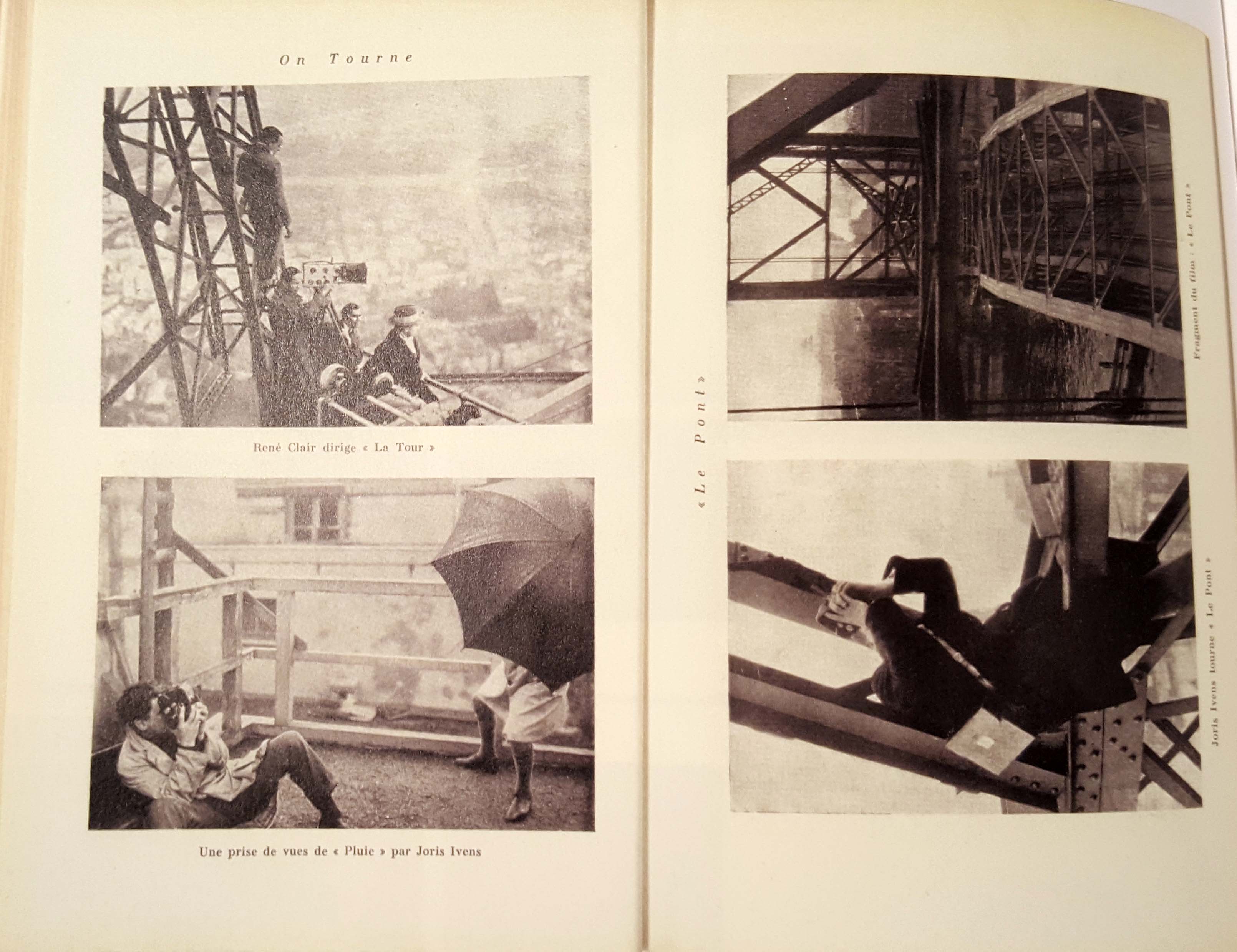
Cover Varietés, nr. 12, April 1929 with photos of Krull about Ivens filming the lift bridge in Rotterdam. Collectie AMSAB, Gent.
Photography had an important role in Variétés, and the magazine presented photographic images in some innovative ways. Every edition included about sixty photos, grouped into separate sections and printed on glossy paper. Each of these photo sections, which were distributed evenly across the magazine, told their own story, the photographs themselves thereby becoming an autonomous means of expression. They were usually presented in combinations of two or four, creating new links and interpretations, which were often underscored by the captions.
Mesens, a surrealist, certainly had a decisive role in the selection of photographs, and it is doubtless his hand we see in these enigmatic, humorous, or subversive combinations of images. Anonymous photos, postcards, film stills, anthropological documentation, and fashion or sports photos were combined with signed images by avant-garde photographers, creating photo pages whose poetic, ironic, and enigmatic character startled the reader and transcended conventional magazine layouts. Variétés was a magazine for adventurous art lovers who were open to new visual experiences.
The 1920s were a turning point in the arts, and also in photography. The First World War had brought an end to the last vestiges of the nineteenth century. For a new generation of artists, post-revolutionary Russia meant a delirious freedom. The old could be thrown away entirely, and anything was possible. A new photographic language arose that made use of unusual camera angles, strong diagonals, and extreme close-ups. Anything that intensified visual experience was relevant, including aerial photography and scientific techniques such as X-rays and microscopy. Darkroom experiments with double exposure and photograms expanded the photographer’s vocabulary. Through the photographer’s eyes, machines and lifeless objects sometimes seemed to be possessed by supernatural forces.
The magazine’s picture editor E.L.T. Mesens was a friend of the Parisian surrealist artist Man Ray, and Ray’s influence on Variétés is unmistakeable. Mesens included Ray’s work from the magazine’s very first issues. He also devoted a photo section to the French photographer Eugène Atget (1857-1927), who had been discovered by Man Ray and who the surrealists acknowledged as a pioneer.
From September 1928 onwards Variétés regularly published work by Germaine Krull, Eli Lotar and André Kertész, three immigrants to Paris who were linked to the high-profile weekly magazine VU. Commissions by magazines and publicity photographs offered this generation an entirely new professional field in which women were, for the first time, well represented. This can also be seen in Variétés’ photo selections. In the 1920s the American photographer Berenice Abbott was an assistant to Man Ray in Paris, and when Eugène Atget died in 1927 it was Abbott who took care of his archive. Back in New York she documented modern high-rise building construction from a frog’s eye view, using strong tonal contrasts that imbued this architecture with a dramatic expressiveness. Florence Henri and Aenne Biermann worked in their studios to create extremely precisely composed still lives. They both transformed everyday objects into something beguiling, Henri with the ingenious use of mirrors and Biermann with using double exposures. With a total of 125 photos, however, Germaine Krull is the best represented female photographer in Variétés and in the exhibition. Krull made her name with photographs of modern steel constructions such as the Eiffel Tower and harbour machinery. Variétés also showcased her reportage work on a wide variety of subjects that included street markets in Paris and Amsterdam, homeless people, heavy industry, and traffic in the modern metropolis.
For its contemporaries the magazine’s title was an obvious reference to a blockbuster of German silent film: Variété by E.A. Dupont (1925), with its famously breathtaking scene in which the camera is given a central, ‘subjective’ role and its salto mortale gives the cinemagoer the vertiginous sense of being thrown through the air along with the trapeze artist. From the magazine’s very first edition film was abundantly evident in Variétés in the form of reviews, set photos, and film star portraits. A film still of the trapeze scene in Variété is just one of a long series that filled the magazine’s photo pages.
The reciprocal influence of film and photography in these years is indisputable. For the makers of Variétés film and photography were of equal value, and clearly on a par with the other visual arts. The eye of the camera was opening new worlds.
All these developments in the language of film and photography are beautifully displayed in the galleries of Keizersgracht 399, with a large selection of photographic work taken from the 24 editions of the Variétés magazine. With this exhibition Huis Marseille is bringing an exceptional series of vintage prints to the Netherlands, showing work by the most important photographers of the interwar years – from Man Ray to Moholy-Nagy, from Atget to Eli Lotar, and work by female pioneers such as Germaine Krull, Berenice Abbott and Florence Henri. The various galleries focus on themes and genres such as Surrealism, still lives, the modern city, the poetry of the street, the machine age, and photographic experiments. Three locations along the museum route present films and film fragments having a direct relationship with the photographs on display, such as the trapeze scene from Variété. The photo pages with which the Variétés magazine distinguished itself as an important platform for the international avant-garde recur throughout.
The exhibition Variétés. Photography and the Avant-Garde is based on Variétés, Revue d’avant-garde – Berenice Abbott, Florence Henri, Germaine Krull… de Amsab-collectie onthuld, a co-production of Amsab-Institute of Social History, Ghent, Tijdsbeeld, Ghent, and Les Recontres d’Arles. (Curator Sam Stourdzé in collaboration with Ronny Gobyn and Damarice Amao.)
Huis Marseille, Keizersgracht 401, Amsterdam
Variétés. Fotografie en avant-garde
24.06.2023 — 22.10.2023
https://huismarseille.nl/tentoonstellingen/varietes-fotografie-en-avant-garde/
This year the Radboud University started a new course on documentary film, called Moving Documentaries. In the framework of this course a group of 15 students visited the Joris Ivens Archives and found out how archival documents can support research and shed new light on context and.content. The case study was Ivens' documentary The Spanish Earth (1937). At first the group watched the documentary in the film theater LUX on large screen. Afterwards they discussed the film and went to the Regional Archives Nijmegen, where the collection of the Joris Ivens Archives are being kept in the vaults. In these vaults the students saw how 'history' is preserved and saved for the future, like the film posters of The Spanish Earth, photos, clippings, the Bell & Howelll film camera, letters, telegrams and other correspondence between Ivens and Luis Bunuel, Ernest Hemingway, John Dos Passos and others involved in this film proudctions and film interviews with Martha Gellhorn, Helen van Dongen and Joris Ivens himself. In the study room the students worked with these materials to do research concerning major issues of documentary film.
The book of Bill Nichols On Documentary is their course book.
General information about the course:
By the end of this course, students will be able to:
- understand and contextualize the documentary as a genre in relation other genres of film.
- comprehend, critically reflect on, and analyze documentary films: their generic characteristics, poetics, production, distribution and consumption;
- critically process diverse theoretical perspectives on the genre,
- apply their skills for observing, describing, analyzing and critiquing a number of case studies;
- reflect critically on the methods and theories used in secondary sources, written samples from peers and the student's own essays.
The genre of the documentary has a long history. Although the English term was not coined before 1926, similar practices have existed since the dawn of film making. Their popularity has been increasing ever since, and in the 21st century this genre has spread across a variety of different media: traditional platforms (such as documentary television and cinema), Netflix but also social media, such as YouTube.
Documentaries are moving in several senses of the word. First, they often have a link with traveling and mobility. This link can be very explicit, as in Michael Palin’s BBC-series Travel around the World in 80 Ways (1989), or more subtle, for instance when considering the filmmaker who travels to distant times and/or places in order to tell the stories of injustices inflicted upon others, or who is driven into exile because of his/her work (like Roberto Hernández, who had to seek assylum in the Netherlands for his 2021 Netflix-documentary Reasonable Doubt: a Tale of Two Kidnappings). In a metaphorical sense, the documentary film invites us to move to a reality still unknown. Second, documentaries can move people in a literal sense, for instance when someone decides to go on a safari after watching National Geographic Channel. Third, they can also move us in an emotional sense, for instance by bringing us to tears and shocking us, as is the case with Enjoy Poverty (2009) by Renzo Martens. In doing so they often try to have an impact on people’s behavior towards the injustices unveiled, with varying degrees of success. Last, many documentaries attempt to change worldviews (and policies), by offering different interpretations of real life ‘facts’, as was the case with Davis Guggenheim’s An Inconvenient Truth (2006) on climate change, or The Revolution Will Not Be Televised (2003) by Kim Bartley and Donnacha Ó Briain, on political events in Venezuela. In doing all this, documentaries have an important impact on knowledge production in the widest sense of the word.
In this course, we will critically explore the art of the documentary film through a variety of examples of documentaries from around the world. Even if documentary films tell us stories about real life, they have a complex relation with truth and reality. Documentary filmmakers use reality as their raw material, to manipulate it into a narrative with a plot and a purpose. At the same time, these narratives are influenced by the media platforms on which they are circulated. We will analyze the complex relations between fiction and reality, (post-)truth and authenticity, engagement and objectivity, advocacy and entertainment, which are at the center of documentary filmmaking as an art and a medium.
On 21 September Tian Wang (1976, Tongxiang 桐乡) was appointed doctor after a succesful defence of her dissertation 'Joris Ivens et la Chine : histoire d'une longue relation' between 1938 and 1988. It was Régis Debray who advised her to study Ivens’ films in the framework of the theories of French historian Marc Ferro ‘Le film, l’agent et produit de l’Histoire’. For Tian Wang it was essential not only to study paper documents, but especially to meet and speak the people involved, both in China and the West. The 572 pages of text and 160 pages of images convincingly proof the unique position the Dutch filmmaker created and continued to maintain during decades. Not only compared to other foreign filmmakrds, but also compared to Chinese directors.
Read more: A dissertation about the long relationship between Ivens and China
Read more: A short film about 50 years of solidarity between The Netherlands and Quang Tri 1972-2022
On 17 August 2022 the former chairperson of the DEFA Foundation Ralf Schenk passed away in Berlin. He was a member of the board of the European Joris Ivens Foundation from 2012 to 2015. After a study in journalism at the Karl Marx University in Leipzig he proved himself quickly as a very erudite filmjournalist, among other through his contributions to the important East-German periodical Film und Fernsehen. After the fall of the Wall he broadened his scope to book publications on the history of DEFA, television programmes, interviews with veterans of the German film world, columns in the daily Berliner Zeitung and inlays for DVD-editions.
One of the priorities of his time as director of the DEFA Foundation (2012-2020) was to bring back under the attention the films that Joris Ivens had made in the 1950s for the DEFA. This resulted in two DVD-editions: Lied der Ströme (2015) and Joris Ivens DEFA-dokumentarfilme (2018). Most importantly he was the driving force behind the publication of the comprehensive study by Günter Jordan of the DEFA-years of Ivens. When Marceline Loridan objected to its publication, because she was unable to read the manuscript in the German language, Ralf organised a trip to 61 rue des Saints Pères, where Günter Jordan with the help of a qualified interpreter convinced her of the quality of his work. The elaborate book was published as Unbekannter Ivens (Unknown Ivens, 2018) and formed an essential contributions to the body of Ivens-studies.
In 2020 he retired, cherishing a great number of plans as to what he was going to research and write about during the coming years. His first project was a book about the Bulgarian-German film director Slatan Dudow, the maker of Kuhle Wampe, who was killed in a car crash in the GDR in 1963. A brain tumor prevented Ralf from realising this and many other plans.
We remember Ralf Schenk with enormous gratitude.
Bert Hogenkamp, 26 August 2022, Amsterdam.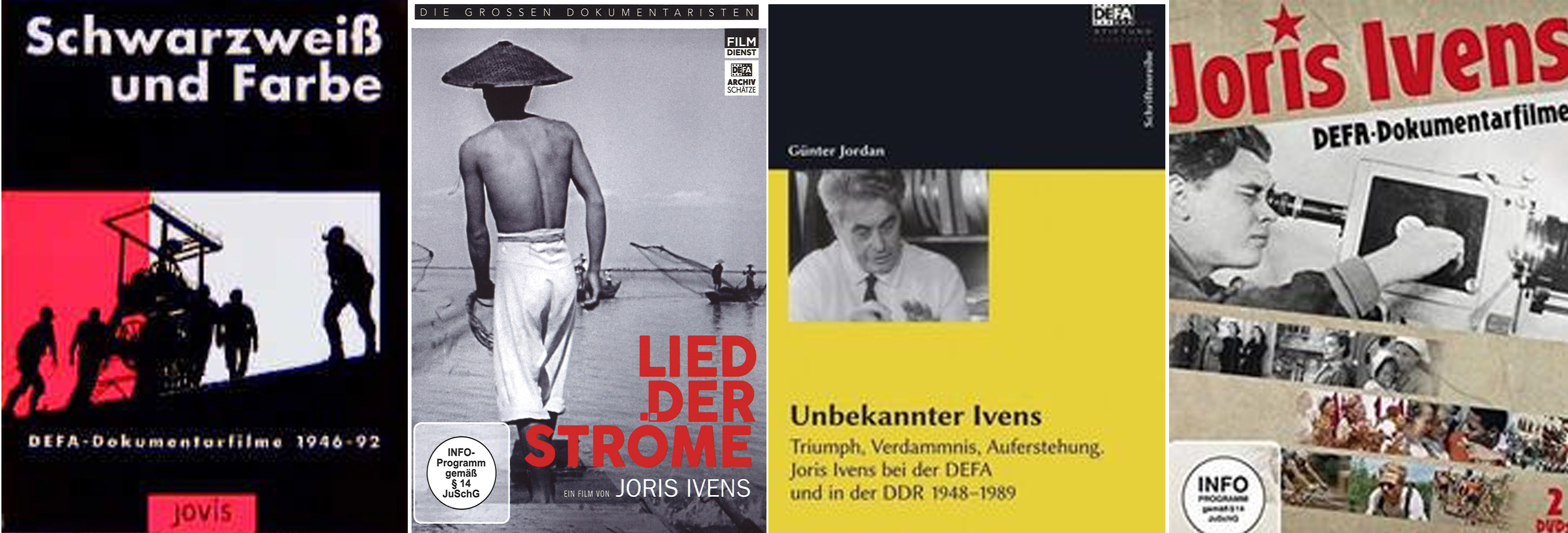
Publications by Ralf Schenk and Günter Jordan related to Joris Ivens and the DEFA Studios.